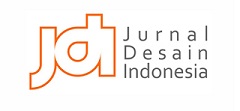PERANCANGAN BUSANA PRIA SIAP PAKAI DENGAN INSPIRASI RITUAL IOMANTE SUKU AINU
Abstract
Keywords
Full Text:
PDF (Bahasa Indonesia)References
Al-Tabany, T. I. B., & Trianto, T. T. T. (2014). Mendesain Model Pembelajaran Inovatif, Progresif dan Kontekstual. Jakarta: Kencana.
Aryani, D. I. (2011). Tradisi Angpaw di Indonesia. Prosiding Universitas Kristen Maranatha, 1(1). Bandung: Universitas Kristen Maranatha.
Ayda, P. N., Astuti, A. (2020). Pembuatan Surface Design Pada Busana Ready To Wear Dengan Teknik Sashiko. Teknobuga: Jurnal Teknologi Busana Dan Boga 8(1), 62-69.
Bognar, T. (2022). Japan, Hokkaido, Poroto Kotan, Ainu aboriginal traditional dress, detail. User License:Rights Managed. https://previews.agefotostock.com/previewimage/medibigoff/a1358c6a40f9948bfb3685a8848e6f3c/z71-1427823.jpg
Daryanto. (2013). Inovasi Pembelajaran Efektif. Bandung: Yrma Widya.
Ferindra, Y. (2020). Redesign Pakaian Secondhand Berwarna Putih Menggunakan Teknik Patchwork yang Terinspirasi dari Kain Poleng. Jurnal Narada 7(2), 215-228.
DOI: 10.2241/narada.2020.v7.i2.006.
Indonesia Trend Forecasting. (2021). Fashion Trend 2021/2022 "The New Beginning". Jakarta: Badan Pariwisata dan Ekonomi Kreatif.
Irish, A. B. (2009). Hokkaido: A History of Ethnic Transition and Development on Japan’s Northern Island. North Carolina: McFarland.
Kitakamae, T. (1985). Chitsujo no Retorikku to Shakai Ninshiki. 秩序のレトリックと 社会認識 (The Rhetoric of Order and Social Consciousness), 69-94.
Lewallen, Ann-Elise. (2016). The Fabric of Indigeneity : Ainu Identity, Gender, and Settler Colonialism in Japan. [School for Advanced Research Global Indigenous Politics Series]. Albuquerque: University of New Mexico Press.
Peterson, B. (2013). The Song The Owl God Sang: The collected Ainu legendsof ChiriYukie. UK: BJS Books.
Poespo, G. (2009). A-Z Istilah Fashion. Jakarta: Gramedia.
Rezeki, R. D., Nurhayati, N. D., Mulyani, S. (2015). Penerapan Metode Pembelajaran Project Based Learning (Pjbl) Disertai Dengan Peta Konsep Untuk Meningkatkan Prestasi Dan Aktivitas Belajar Siswa Pada Materi Redoks Kelas X-3 Sma Negeri Kebakkramat Tahun Pelajaran 2013/2014. Jurnal Pendidikan Kimia (JPK) 4(1): 74-81.
Rukman, S. J. M. (2018). Motif Ombak dengan Teknik Bordir Pada Busana Formal Perempuan. [Skripsi]. Bandung: Program Sarjana Pendidikan Seni dan Desain, Universitas Pendidikan Indonesia.
Sato, Y. (2013). Iyomante: Sacred ceremony of the Ainu~ forgotten indigenous people of Japan, part 4. (2013, January 27). Diambil dari: https://discoverjapannow.files.wordpress.com/2013/12/iomante3-524x362.jpg.
Utagawa, H. (1992). The "Sending-Back" Rite in Ainu Culture. Japanese Journal of Religious Studies, 19 2/3, 255-270.
DOI: http://dx.doi.org/10.22441/narada.2022.v9.i2.006
Refbacks
- There are currently no refbacks.
Fakultas Desain dan Seni Kreatif
Universitas Mercu Buana
Gedung E Lantai 4
Jl. Raya Meruya Selatan no.1, Kembangan, Jakarta 11650
Tlp./Fax: +62215871335
Journal International Standard Serial Number (ISSN) Registration:
The Journal is indexed by:
Tools for Citations & Plagiarism Detection:

Ciptaan disebarluaskan di bawah Lisensi Creative Commons Atribusi-NonKomersial 4.0 Internasional
 NARADA: Jurnal Desain dan Seni
NARADA: Jurnal Desain dan Seni

























